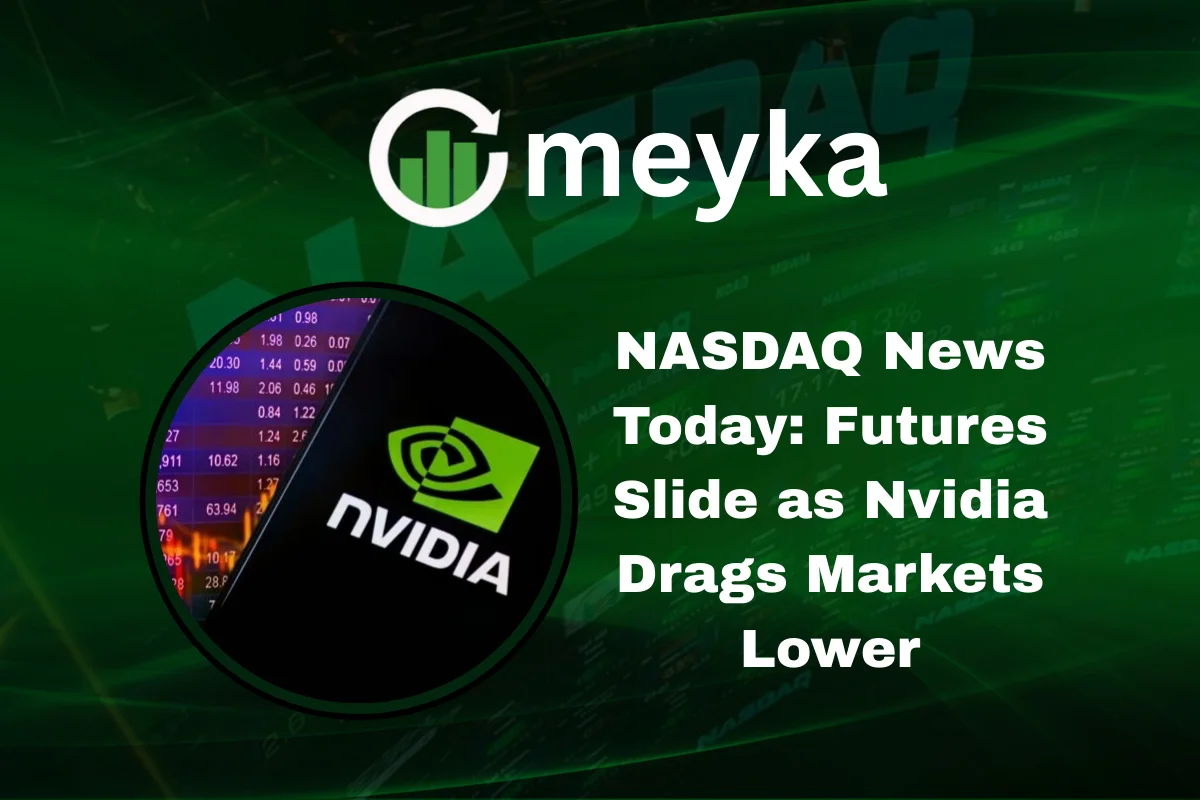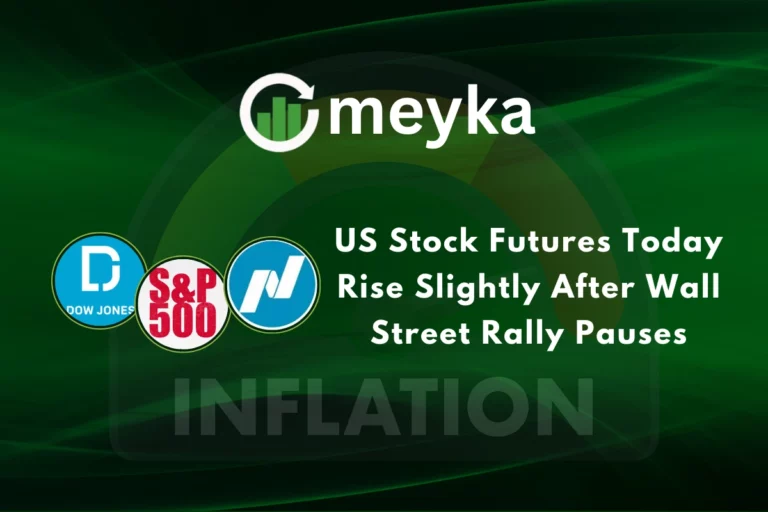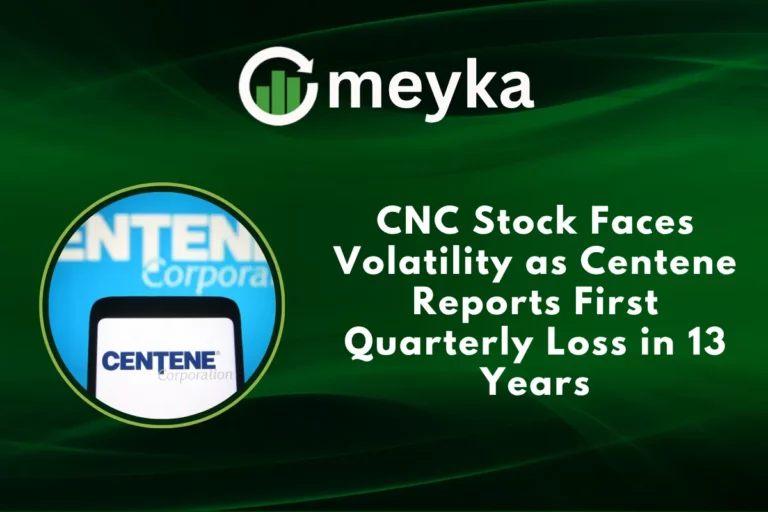NASDAQ News Today: Futures Slide as Nvidia Drags Markets Lower
The U.S. stock market opened on a cautious note today as NASDAQ futures slipped lower, weighed down by sharp declines in Nvidia shares. With global investors closely watching the technology sector, the weakness in one of the world’s largest chipmakers raised concerns about the sustainability of recent market gains. As Nvidia Drags the market downward, investors are questioning whether the AI-driven rally has peaked or if it can regain momentum.
Nvidia Drags Markets Amid Tech Sector Weakness
Nvidia (NVDA: NASDAQ), a bellwether for AI stocks and the broader semiconductor industry, saw its stock retreat after reports of cooling demand and investor worries about stretched valuations. The company, which has been at the center of the AI boom, is now experiencing renewed scrutiny as traders take profits following months of strong gains, and once again Nvidia Drags markets lower.
The NASDAQ Composite slipped as Nvidia’s pullback weighed on other mega-cap tech names. Market participants believe that the recent surge in AI enthusiasm may be losing momentum, leading to a reassessment of growth expectations.
Broader Market Reaction
The impact of Nvidia’s decline was not limited to tech stocks. Futures tied to the S&P 500 and the Dow Jones Industrial Average also traded lower as risk sentiment soured. Investors are becoming increasingly cautious about whether the rally in equities, particularly in technology names, can sustain itself in the face of tightening financial conditions and geopolitical uncertainties.
Meanwhile, Treasury yields edged higher, adding additional pressure to equities. Rising bond yields tend to weigh on growth-oriented sectors such as technology, making valuations harder to justify.
AI Stocks Under Pressure
For months, AI-related companies have been the driving force behind market gains. Firms tied to data centers, semiconductors, and cloud infrastructure saw massive inflows as investors bet on the long-term promise of artificial intelligence. Nvidia, in particular, became the poster child for this surge, with its chips powering many of the world’s largest AI models.
However, the current pullback suggests that markets may be entering a new phase. Analysts warn that the pace of growth may not keep up with lofty expectations, and investors should consider balancing enthusiasm with caution.
Stock Research Signals Valuation Concerns
Recent stock research reports have pointed to stretched valuations in Nvidia and similar companies. While long-term prospects remain strong, short-term risks are evident. Analysts highlight that Nvidia’s rapid price appreciation over the past year has priced in a significant portion of expected future growth, leaving little room for error and showing how easily Nvidia Drags valuations under pressure.
At the same time, rivals in the semiconductor space are stepping up efforts to capture market share, which could limit Nvidia’s dominance. The competition, combined with potential regulatory scrutiny, adds further layers of uncertainty.
Earnings Season Looms Large
The timing of Nvidia’s decline is notable as it comes ahead of a critical earnings season for U.S. corporations. Investors will be closely monitoring whether tech giants can justify their current valuations through strong revenue and profit growth.
Market experts argue that earnings results from Nvidia, along with other leaders in AI and cloud technology, will serve as a litmus test for the broader market. A weaker-than-expected showing could accelerate the downward pressure already visible in futures trading.
Global Market Implications
The decline in U.S. futures also reverberated through global markets. Asian and European equities posted mixed performances as investors weighed the implications of a softer tech sector. With Nvidia acting as a symbol of the AI revolution, its performance carries global significance.
Foreign markets heavily reliant on U.S. technology demand, such as Taiwan and South Korea, also saw declines in semiconductor stocks. This interconnectedness underscores how Nvidia drags not just the U.S. market but also international equities tied to the tech supply chain.
Investor Sentiment and Market Strategy
Investor sentiment has become more cautious, with many traders shifting toward defensive sectors such as healthcare, consumer staples, and energy. While technology remains a long-term growth driver, the near-term volatility has prompted some to seek safer havens.
Portfolio managers advise a balanced approach, suggesting that investors diversify holdings rather than chasing high-flying AI stocks at peak valuations. This strategy may help mitigate risks in the event of further declines.
The Road Ahead for AI Stocks
Despite the current setback, the long-term outlook for the AI and semiconductor industries remains positive. Governments and corporations worldwide continue to invest heavily in artificial intelligence, data centers, and cloud services. Nvidia remains positioned as a leader in this field, although it now faces increased scrutiny regarding its valuation and execution.
For investors, the current downturn may offer an opportunity to reassess entry points and manage expectations. While short-term volatility is likely to persist, the broader trend toward AI adoption remains intact.
FAQs
Nasdaq futures are lower due to weakness in technology stocks, particularly Nvidia, which dragged down the market after concerns over high valuations and slowing demand.
AI stocks remain a strong long-term play due to global adoption trends. However, investors should be mindful of short-term volatility and stretched valuations, making stock research and diversification essential.
Nvidia’s decline highlights the market’s reliance on a few mega-cap technology companies. When these stocks face pressure, they often drag the entire Nasdaq and related indices lower.
Disclaimer:
This content is made for learning only. It is not meant to give financial advice. Always check the facts yourself. Financial decisions need detailed research.






